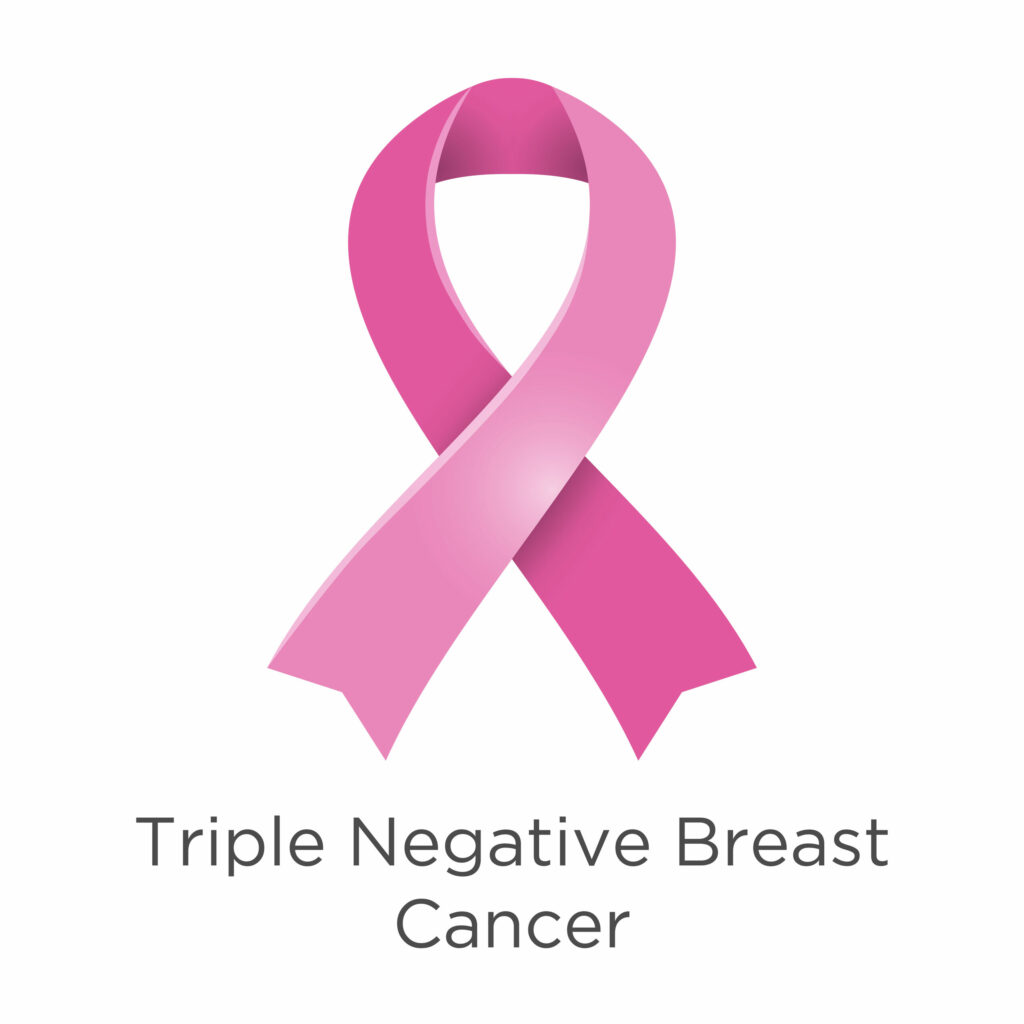


Breast cancer is the most common cancer among women worldwide, and it is a major cause of morbidity and mortality. Triple-negative breast cancer (TNBC) is a subtype of breast cancer that accounts for approximately 15-20% of all breast cancer cases. It is characterized by the absence of estrogen receptor (ER), progesterone receptor (PR), and human epidermal growth factor receptor 2 (HER2) expression. TNBC is more aggressive than other subtypes of breast cancer. It also has its association with a higher risk of recurrence and mortality. In this article, we will discuss the symptoms, diagnosis, treatment, prognosis, and prevention of TNBC.
There are four main types of TNBC, which are:

These subtypes of TNBC are not mutually exclusive, and a single tumor may have features of more than one subtype. Additionally, research identifies additional subtypes of TNBC and to better understand the molecular and genetic characteristics of this disease.
Triple-negative breast cancer (TNBC) does not typically cause any specific symptoms that differ from other types of breast cancer. However, the following symptoms may be indicative of breast cancer and should prompt further evaluation by a healthcare provider:
Not all breast lumps or changes are indicative of breast cancer, and many benign (non-cancerous) conditions can cause similar symptoms. However, any new or unusual breast symptoms should be evaluated by a healthcare provider to determine the cause and appropriate treatment. Additionally, regular breast self-exams and mammograms can help with early detection of breast cancer, which can improve the chances of successful treatment.
The diagnosis of triple-negative breast cancer (TNBC) is typically made through a combination of imaging tests, such as mammography, ultrasound, or MRI, and biopsy.
A biopsy involves taking a sample of breast tissue for analysis under a microscope to determine whether cancer is present. There are several types of biopsy:
Once a biopsy confirms the presence of TNBC, then the purpose of further testing may be to determine the stage of the cancer and whether it has spread to other parts of the body. This may include blood tests, imaging tests such as CT scans or PET scans, or a bone scan.
Treatment for TNBC usually involves surgery, chemotherapy, and radiation therapy. Surgery to remove the tumor is usually the first step, followed by chemotherapy to kill any remaining cancer cells. Doctors may recommend Radiation therapy after surgery to reduce the risk of the cancer returning.
Chemotherapy is the mainstay of treatment for TNBC, but it can cause significant side effects. However, there are ongoing clinical trials investigating new treatments for TNBC, including targeted therapies and immunotherapies, which may be more effective and have fewer side effects than traditional chemotherapy.
Targeted therapies are drugs that target specific molecules involved in cancer cell growth and survival. In TNBC, targeted therapies are not effective because TNBC lacks the expression of ER, PR, and HER2, which are the targets of current targeted therapies for breast cancer. However, there are ongoing clinical trials investigating new targets for TNBC, such as the androgen receptor, found in some TNBC tumors.
Immunotherapy is a type of cancer treatment that harnesses the power of the immune system to fight cancer. It works by stimulating the immune system to recognize and attack cancer cells. Immunotherapy has shown promising results in the treatment of TNBC, particularly in combination with chemotherapy. The FDA has approved two immunotherapies, atezolizumab and pembrolizumab, for the treatment of advanced TNBC.
TNBC tends to be more aggressive than other subtypes of breast cancer. It also has the association with a higher risk of recurrence and mortality. However, the prognosis depends on the stage of the cancer at diagnosis, the size of the tumor, and whether it has spread to other parts of the body. Early detection and treatment can improve the prognosis for TNBC.
There is no sure way to prevent TNBC, but there are steps women can take to reduce their risk of developing any type of breast cancer. These include maintaining a healthy weight, exercising regularly, limiting alcohol intake, not smoking, and getting regular breast cancer screenings.
While anyone can develop triple-negative breast cancer, there are some factors that may increase the risk, including:
Breast cancer screening is important for the early detection of all types of breast cancer, including TNBC. The American Cancer Society recommends that women at average risk of breast cancer should start receiving mammograms at age 45. However, it should continue to receive mammograms every year until age 54. After age 54, women can choose to receive mammograms every two years, or continue to receive them every year. Women at higher risk of breast cancer may need to start screening at an earlier age or have more frequent screenings.
Clinical trials are research studies that test new treatments, drugs, and medical procedures to determine their safety and effectiveness. However, clinical trials are essential for developing new treatments for TNBC, as well as improving existing treatments. Patients with TNBC who want to participate in a clinical trial should talk to their healthcare provider.
A diagnosis of TNBC can be overwhelming, and patients may need support from friends, family, or support groups. There are many resources available for patients with TNBC, including:
Triple-negative breast cancer is a challenging subtype of breast cancer to treat, but there are ongoing efforts to develop new treatments and improve existing treatments. Early detection and treatment can improve the prognosis for TNBC, so it is important for women to get regular breast cancer screenings. Patients with TNBC may benefit from support and resources, including support groups, cancer centers, and online resources.
Read Also: